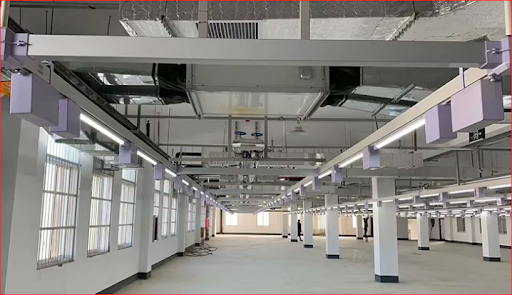
Training environments for law enforcement must keep pace with growing demands. Today’s facilities need electrical systems that can support both traditional drills and advanced technologies like breaching simulators, virtual reality, and drone operations. These setups can’t be rigid—they need to adjust quickly, deliver steady power, and prioritize safety.
Scalable, easy-to-maintain infrastructure gives centers the flexibility to adapt as methods change. Whether it’s powering high-voltage tools or supporting mobile command units, the right electrical system creates space for realistic, fast-paced instruction. Without reliable power, even the best-designed exercises fall short. Getting this foundation right makes every training session count.
Optimizing Training Environments with Busway for Maximum Adaptability
Busway systems offer a smart, hassle-free way to reconfigure power layouts. As training changes—from hands-on drills to immersive simulations—busway components can be relocated quickly to meet changing demands. This adaptability helps instructors shift between setups without delays, keeping sessions running smoothly.
The modular design supports high-powered tools like breaching simulators and drone charging stations, both increasingly common in law enforcement training. Consistent power minimizes glitches, so equipment performs as expected and trainees stay focused. Upgrading to a system that responds quickly to new scenarios makes the overall process faster, smoother, and more aligned with operational needs.
Meeting High-Demand Electrical Loads in Scenario-Based Training Areas
Scenario-based drills rely on equipment that draws significant power. Live-fire ranges and tactical shoot houses need dedicated electrical setups built to handle intense, sustained loads. With dependable infrastructure, facilities can operate advanced tools like ballistic sensors and automated target systems without delays or dropouts.
Stable power also enables accurate tracking of performance data, such as response times and decision-making under stress. This level of insight supports more targeted feedback and measurable improvement. When systems run without interruption, instructors can focus on teaching—and trainees get the full benefit of every session.
Adapting Electrical Infrastructure for Mobile and Temporary Training Setups
Mobile command centers and pop-up training sites need flexible power solutions that are ready to go. Rapid-deployment systems make it easier to connect essential tools like surveillance cameras and communication gear, helping teams respond quickly in dynamic environments. These setups allow agencies to run off-site drills right away, adding realism to emergency response practice.
Clear ground-level access during high-intensity training is key for both safety and efficiency. Open pathways help prevent tripping hazards when trainees are moving quickly between zones, especially when carrying gear or operating equipment. This flexibility creates a realistic setting where trainees can practice skills they’ll need in the field.
Minimizing Maintenance and Downtime in Key Facilities
Centralized power distribution simplifies maintenance in busy training centers. Durable busway systems hold up well under tough conditions, such as repeated equipment relocation and the constant setup and teardown of different training modules, cutting down on wear and tear. They can handle the demands of intense training, including high-frequency load changes from equipment like automated target systems, leading to longer equipment life and fewer repairs.
Moving away from hardwired systems makes repairs faster and reduces the need for complicated wiring fixes. Quick-connect features in busway systems allow faulty sections to be isolated and replaced without shutting down the entire power network. This streamlined approach cuts down on downtime, helping training stay on schedule. Investing in centralized power setups keeps operations running smoothly, so the focus stays on meeting training goals without unnecessary interruptions.
Improving Safety and Compliance with Smarter Power Distribution
Advanced power monitoring systems are a key safety feature in training centers. They catch electrical problems early, lowering the risk of hazards like overloaded circuits or fires. Constant monitoring of power use helps facilities follow safety rules and maintain a safer environment for high-stakes training.
Being watchful about power use protects both people and equipment. Smart monitoring systems display real-time data on current loads and voltage fluctuations, giving trainers clear insights into system status without extra effort. Staying proactive with electrical management cuts risks during important sessions, reducing the chance of equipment failure or unexpected downtime.
Power systems that support law enforcement training should be more than just reliable—they should be responsive, low-maintenance, and easy to reconfigure. Modular solutions like busway systems let facilities shift quickly between formats without rewiring, while centralized power setups reduce downtime and simplify upkeep. Mobile units and fast-deploy systems add realism to field exercises, and real-time monitoring improves safety by flagging issues early. If your center needs electrical infrastructure that keeps up with high-demand tools and shifting scenarios, it’s time to rethink your setup. Contact our team to learn how smart power distribution can support safer, more efficient training environments.

